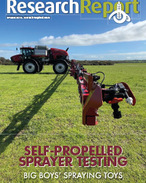This article is 3 years old. Images might not display.
Agriculture Victoria farm water supply specialist, Clem Sturmfels, said the risk of dam failure has increased significantly, due to the rapid rise in dam water levels, overtopping of dam walls and blocked spillways.
Sturmfels encouraged landholders to inspect and monitor their gully dams on a regular basis to look for signs of bank subsidence, cracking, leaks and/or tunnelling.
"Landholders should also check dam spillways and outlet pipes to ensure they have ample capacity and are free of sediment, debris and excessive vegetation," Sturmfels said.
"Gully dams are of particular concern as much of the water is stored above ground level and held back by an earthen bank," he said.
The sudden failure of a gully dam can pose a major safety issue to individuals and communities downstream, as well as resulting in the loss of the water and added cost of repairs.
Sturmfels recommends taking a systematic approach when undertaking a dam inspection.
"Start by walking around the waterline looking for signs of damage. I usually commence my inspection at the dam inlet checking for signs of undermining or collapse, making sure the dam excavation is completely covered with water when the dam is full.
"Take careful note of the water itself, look for signs of discolouration or small whirlpools that may indicate tunnelling or leakage through the dam wall. Then move on to the dam wall itself checking the crest, upstream and downstream faces.
"The bank crest should have a well-rounded top to avoid ponding and be at least one metre above the dam's full supply level. The faces of the dam wall should be gently sloping and free of erosion. The entire bank should have good cover of topsoil and be well grassed.
"The dam spillway needs to be level, flat and stable with adequate capacity to handle major storm events," he said.
The last part of the process is a thorough inspection immediately downstream of the dam wall looking for signs of seepage, tunnelling or erosion commonly indicated by wet, boggy areas or excessive vegetation.
"A one metre x 12mm steel probe makes a useful tool for checking the condition of dam walls and for locating wet patches downstream," he added.
Landholders should contact their local water authority and council planning officer prior to undertaking repairs or maintenance activities.
For further information on managing dams visit the Agriculture Victoria website agriculture.vic.gov.au/farm-management/water/managing-dams























